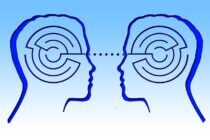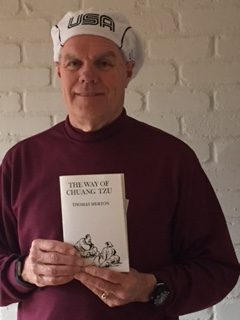 Decisions are made using our conscious mind and our subconscious mind. Emotional decisions are made at the subconscious level, then justified by the conscious mind. To ignore the subconscious mind when working with others on making decisions is to ignore the decision making part of the group mind.
Decisions are made using our conscious mind and our subconscious mind. Emotional decisions are made at the subconscious level, then justified by the conscious mind. To ignore the subconscious mind when working with others on making decisions is to ignore the decision making part of the group mind.
In Medical Hypnotherapy (Peaceful Planet Press 2007) Tim Zimmerman Sierra outlines nine rules for effective communication with the subconscious:
1. Speak in Positive Terms. This is because the subconscious does not register a negative. Rather it forms pictures and responds to imagery. Although we consciously understand a negative, our subconscious mind only understands the picture formed. Thus, when speaking in negative terms the subconscious mind only registers a picture and responds to the imagery of the picture. For instance if a golfer tells himself “I don’t want to hit my ball into the water” the subconscious mind pictures the water and images hitting the ball into the water. Id. at 111.
2. Speak in the Present Tense. The subconscious mind is effectively moved if the goal is occurring now. Mr. Zimmerman Sierra says word therapeutic suggestions so that the client sees the desired goal happening now.
3. Paint Pictures. Here we tell our story in a descriptive way calling into play the listeners past similar experience. Then her subconscious mind accesses her picture of a similar experience as she follows us based on her imagery.
4. Give a Reason. The suggestion is more likely to be accepted by the critical faculty of the conscious mind “and passed to the subconscious mind when it is linked to something that seems logical.” Id. at 112. “The subconscious is constantly making associations, and is primarily interested in two types of information-meaning (A means B) and causality (B occurred because of A). Therefore, you give the subconscious what it is looking for by using reasons in your suggestions.”
5. If too great, make it incremental. To be effective our suggestion must be believable. Thus, if the suggestion seems too big or too far off use incremental suggestion language that indicates change over time: “more and more now,” “every day and in every way,” “becoming,” “growing,” and “greater.”
6. Include Timing. Avoid words like “will,” “soon,” and “tomorrow.” These future words are meaningless to the subconscious. This is because to the subconscious mind the only time is now in the present moment. “Whenever possible, include specific information about when or under what circumstances the… [suggestion takes place].” Id. at 114.
7. Suggest Action. Here we are instructed to suggest to our listener’s subconscious- take action to accomplish what needs to happen. “When suggesting action, be sure to connect taking the action with achieving the goal… .” Id.
8. Use Positive Emotions. Strong emotional words help to open the conscious mind and lead to a more powerful impression on the subconscious. Thus, we are to “[u]se words that generate compelling positive images.” Id. at 114. This creates positive imagery that is “emotionalized.” Id.
9. Specific and Short. Use common easily understood language. Be specific and clear on what the goal is. Refrain from language that is too general. Rather be specific and avoid generalizations.
Post Footer automatically generated by Add Post Footer Plugin for wordpress.
 According to Thomas Merton “[t]rue humility excludes self-consciousness… .” Thomas Merton, Seeds of Contemplation at 112 (New Directions 1949).
According to Thomas Merton “[t]rue humility excludes self-consciousness… .” Thomas Merton, Seeds of Contemplation at 112 (New Directions 1949).
 We all have fear. Fear of the unknown. Fear of failure. Fear of success. To have fear is to be alive. To have fear is to understand risk. To have fear is to know something is at stake.
We all have fear. Fear of the unknown. Fear of failure. Fear of success. To have fear is to be alive. To have fear is to understand risk. To have fear is to know something is at stake. Decisions are made using our conscious mind and our
Decisions are made using our conscious mind and our  Thomas Merton in THE WAY OF CHUNG TZU discusses the classic Ju philosophy of Confucius. A philosophy “built on basic social relationships and obligations that are essential to a humane life and … develop the human potentialities of each person in his relationship to others.” Merton, THE WAY OF CHUNG TZU at 17-18 (New Directions 1965).
Thomas Merton in THE WAY OF CHUNG TZU discusses the classic Ju philosophy of Confucius. A philosophy “built on basic social relationships and obligations that are essential to a humane life and … develop the human potentialities of each person in his relationship to others.” Merton, THE WAY OF CHUNG TZU at 17-18 (New Directions 1965). Recently we settled a significant personal injury case where we addressed the issue of a Medicare Set Aside (MSA). The issue was raised by defense during settlement negotiations.
Recently we settled a significant personal injury case where we addressed the issue of a Medicare Set Aside (MSA). The issue was raised by defense during settlement negotiations.  In 2010 I posted a Thought of the Week termed
In 2010 I posted a Thought of the Week termed  Being a quality lawyer is like being a duck:
Being a quality lawyer is like being a duck: Although many lawyers choose to practice law in casual attire. For court appearances and most matters I dress like a lawyer. This means professional attire that inspires confidence-as in a client seeing me as their lawyer. As in a client thinking he looks like a professional who knows what he is doing. As in a client thinking damn I’m glad he’s my lawyer.
Although many lawyers choose to practice law in casual attire. For court appearances and most matters I dress like a lawyer. This means professional attire that inspires confidence-as in a client seeing me as their lawyer. As in a client thinking he looks like a professional who knows what he is doing. As in a client thinking damn I’m glad he’s my lawyer. Once we have agreed to settle with the negligent party’s insurance company we address the settlement proceeds. Here we deal with potential
Once we have agreed to settle with the negligent party’s insurance company we address the settlement proceeds. Here we deal with potential 